The Canon EOS R1 has been hogging all the attention with announcement dates, sneak peeks, and speculation. It had been a long time since we saw a new flagship camera from Canon and now we had one in our hands. But with all the fanfare going on about a new “1” series camera, another Canon release quietly slipped under the radar — until now.
The $4,299 Canon EOS R5 Mark II is here, launched beside its bigger brother, and yet it may prove to be the more interesting camera to a larger proportion of photographers.
I must confess that I fell instantly in love with the original R5 because sometimes a manufacturer just seems to create a product that ticks a lot of boxes and seems purpose-made for your needs. The R5 was compact and lightweight, yet rugged. It had a high-resolution 45-megapixel sensor and excellent autofocus performance for both portraits and wildlife. The ergonomics were comfortable and button placement all felt intuitive and natural. The ability to customize buttons and controls was robust enough to please advanced photographers without feeling cramped or overly complicated. It wasn’t just me who loved the R5, as most other photographers who tried it almost universally agreed.
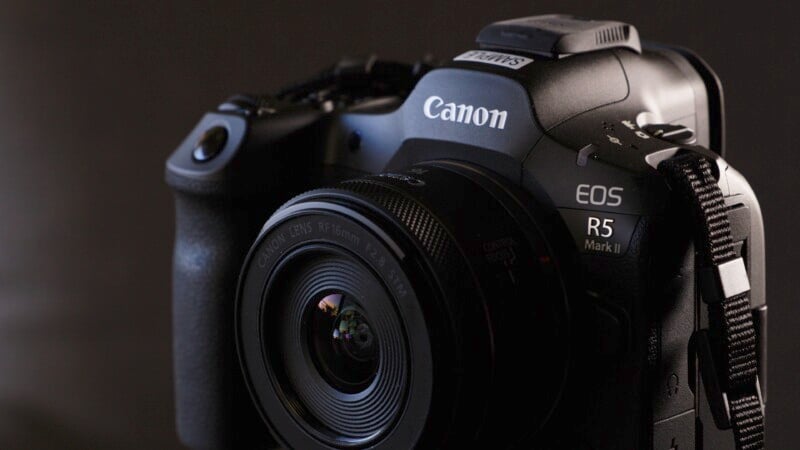
Canon flew the PetaPixel team out to Phoenix, AZ to try out the R1 and R5 Mark II and I have to admit that I was annoyed with the single day of testing we were given to try out both cameras. Added to that, both products were unfinished in their development cycles with early firmware and some bugs and issues present which made testing difficult.
What exacerbated the issue of testing for me even further was that I felt pulled in two different directions by the two cameras. I desired to spend more time with the R5 II but the responsibility and necessity to try to get to grips with the R1 took up more of my time. Not only is it the flagship camera that everyone has been waiting for but it is also the more complicated system to understand. I wish I had more time to play with the R5 II but there is a lot of technology shared between the two bodies and I did get enough time to at least begin to form some first impressions about what I believe is the more exciting camera.
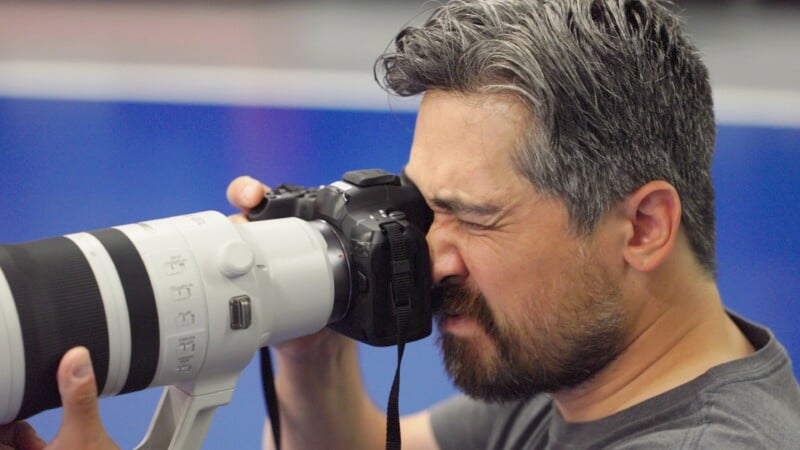
Canon EOS R5 Mark II: Setting Sights on the Nikon Z8
Nikon is basking in the runaway success of its Z8 platform, a camera that brings versatility in line with value, and the R5 II is the champion that Canon hopes will prevail over it. The R5 used a 45-megapixel sensor which upped the resolution game for Canon years ago and the new Mark II continues that with the same 45-megapixel resolution but adds backside illumination and stacks the chip. One nice change to the system as a result is a faster readout speed which is approximately 1/125th of a second (per our testing).
This will enhance autofocus performance, video record modes, and make the electronic shutter more useful when dealing with rolling shutter issues. It’s important to note, however, that the Nikon Z8 has a similar megapixel count with twice the readout speed and for less money. This isn’t to take away from the Canon’s performance but on paper, the R5 II is lagging behind in the sensor department and that is a fact we can’t ignore.

Still, the R5 II has a similar lightweight and rugged body design to its predecessor and some substantial improvements within. The back panel LCD is a fully articulating 2.1-million dot touchscreen and the EVF is borrowed straight from the R3. The 5.76-million dot viewfinder is magnified and bright, and the controls are straightforward to use. Canon has always excelled at camera ergonomics and the R5 II is no exception.

There is a similar arrangement of card slots to the Nikon Z8, with one CFexpress Type-B slot and one UHS-II SD card slot. With the camera’s mechanical shutter, a sustained burst rate of 12 frames per second (FPS) is achievable and with the electronic shutter 30 FPS is possible. As a result, the buffer fills rather quickly even with a fast CFexpress card (it would have been nice to see CFexpress 4.0 support, but alas: only 2.0 here and in the R1).
At 12 FPS, the camera can sustain roughly 10 seconds of shooting but at 30 FPS, the camera will slow down after around three seconds of continuous shooting. This is still acceptable for most action situations but the Canon R1 clearly shows an advantage here. I also liked the Pre-Burst buffer shooting which captures the half-second right before the shutter is pressed to virtually guarantee that the desired moment is captured — another feature the R5 II brings along with the R1.
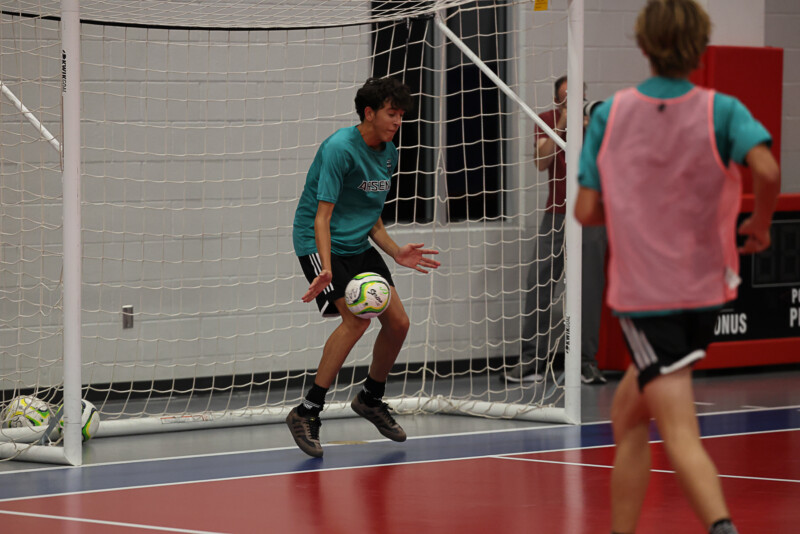
There is a new battery type for the R5 II called the LP-E6P. This gives a slight increase in storage but mostly in power output which unlocks the 8K video modes. These will not be possible with the older LP-E6N and NH batteries. The R5 II has a similar IBIS unit to the R1 which promises roughly 8-stops of stabilization for both photo and video situations.

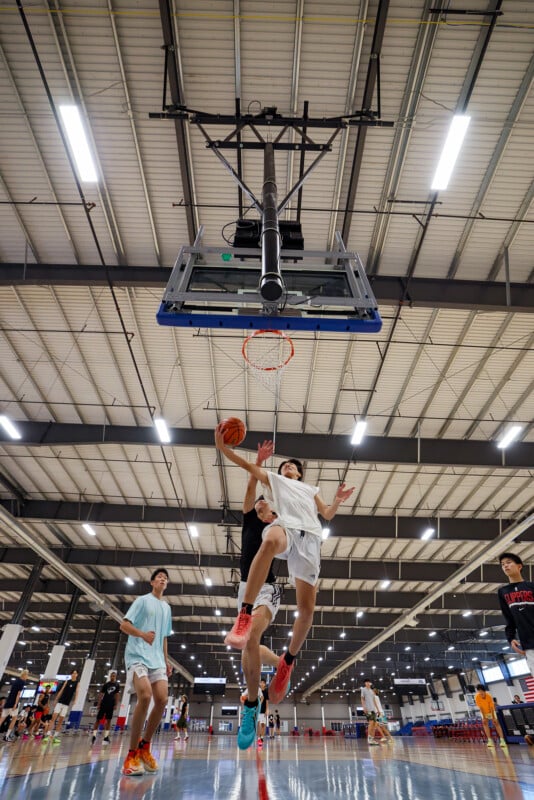
Also borrowed from the R1 is the new ability to up-res JPEGs by four times giving a potential maximum of 179-megapixels. Just like on the R1 though, the results don’t provide any extra detail, just larger file sizes, and do not provide the benefits that we would see in a multi-shot pixel-shifted image. I do like the new noise reduction feature, though, which works on RAW files in camera (but outputs a JPEG) and gives not only noticeably better detail but also reduced visible noise as well. I — like most users — will still likely prefer to do my editing on the computer, though, so these two new features will probably be of very limited use.

Canon EOS R5 Mark II: An Autofocus System Like No Other
The R5 II may not have the readout speeds or the full cross-type AF points of the R1 sensor but it essentially has the same autofocusing system otherwise. Notably, the R5 II features the same Eye Control AF as the R3 and R1 which I find to be an extremely intuitive way to initialize tracking autofocus. Even with crowded scenes, I could simply look at a player on the court and have the camera track them instantly. The same AF algorithms are being used and the R5 II has the same simplified autofocus menu as the R1. I like this change but it takes some getting used to.
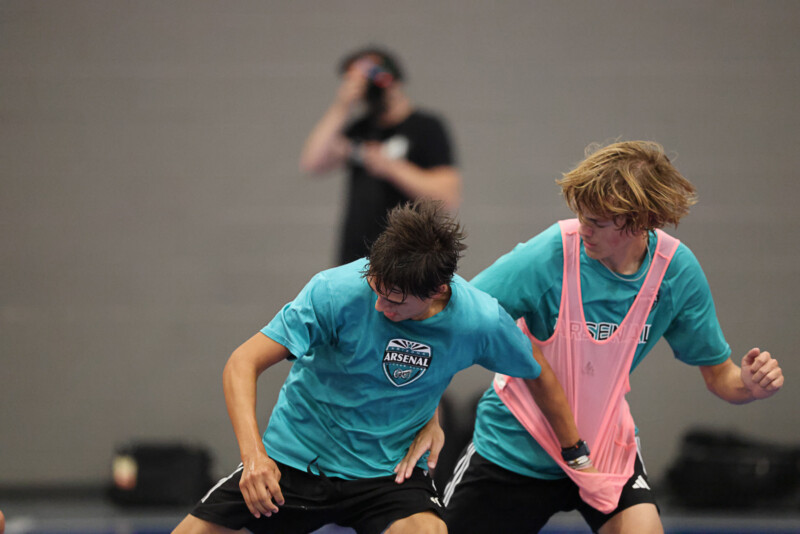
There is more emphasis on allowing the camera to decide how focusing should be handled and the user now only tweaks tracking sensitivity and responsiveness. There are also three specific sports that can be chosen at this time: soccer, volleyball, and basketball. Regardless, I found the autofocus to be accurate, track moving subjects effectively, and nail the focus on the eyes and faces of the players. Even on a pre-production unit, I could tell that the R5 II would handle any serious action and sports scenarios well and while the R1 is the superior camera for demanding scenes, the R5 II will hold its own.
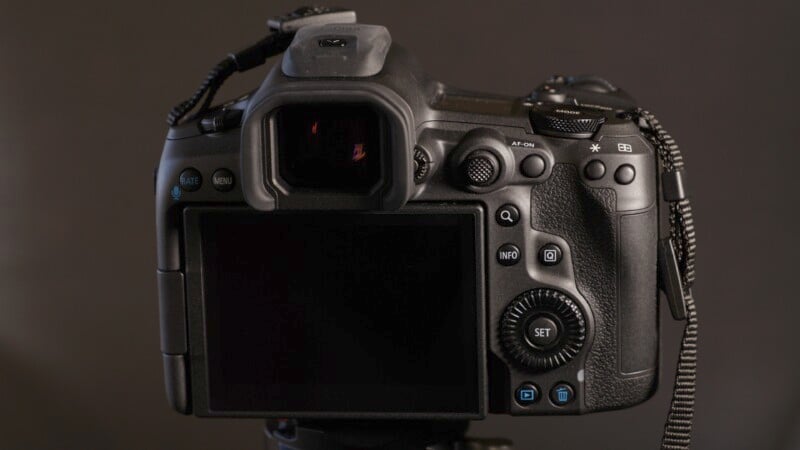
Canon EOS R5 Mark II: A Better Hybrid Platform than the R1
Jordan shot most of our YouTube episodes at the Canon event using the R5 II and enjoyed the experience. It is a very capable video camera with 8K recording possible up to 30p using either internal RAW recording or compressed H265 10-bit 4:2:2. In 4K, the camera can record only up to 30p in an oversampled format. 4K 60p and 4K 120p, unfortunately, are subsampled and image quality takes a hit as a result. Happily, there is no crop required on any of the 4K modes and with the addition of C-Log2, all the files have decent dynamic range and can be graded effectively.
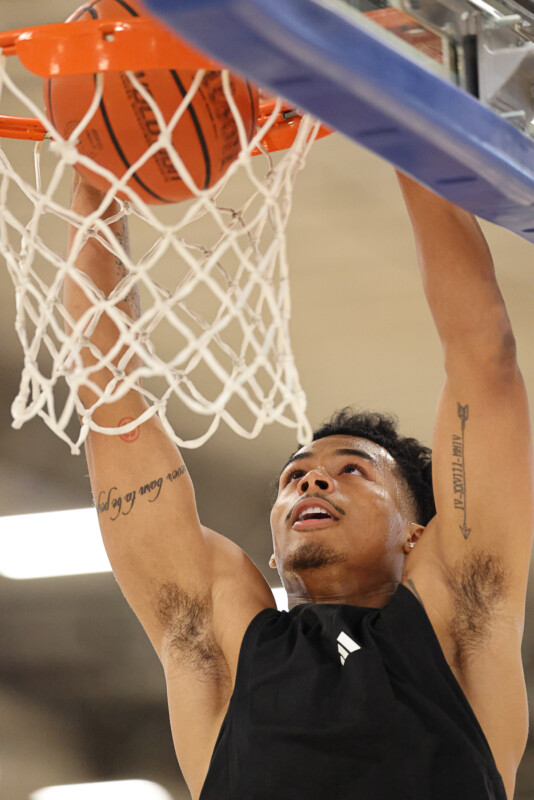
Canon has also added some thoughtful tools like a tally lamp to cue the presenter that the camera is recording. There is also waveform support to meter your exposures and maximize dynamic range which is curiously missing from the R1. A full-size HDMI port is welcome on this relatively small body and of course, a mic jack and headphone jack is also present. Combine all of this with a good IBIS unit and decent rolling shutter performance and the R5 II becomes a handy and capable cinema camera.

Canon also released three new accessory grips for the R5 II starting with a classic vertical battery grip for additional control and longer lasting battery life. There is also a grip that provides Ethernet connectivity for sports and journalism photographers who want the fast transfer rates and hard-wired remote control access. Finally, Canon is introducing a grip that doesn’t provide vertical grip control but does have a cooling fan to increase record times. All three support two batteries. We don’t yet know what the overheating is like on the R5 II but it was a serious issue for the original R5, so a fan grip is some nice reassurance that there is official support to assist with the problem should it arise.
All these grips are expensive, however, starting at $560 and getting as high as $750.


The R5 Mark II is More Exciting Than the Flagship
I’m going to go ahead and say that of the two cameras that Canon is debuting, I am more excited about the R5 II. This is no slight against the R1, as Canon’s latest flagship proves itself to be a capable tool — but it is a highly specialized one.

The R5 II has a lot of the same powerful features present in the R1 and yet has a more versatile sensor, slightly better video capabilities, and is aimed at a broader audience. I could happily see myself shooting sports, action, and wildlife with the R5 II along with any landscape, studio work, or travel photography, too.

But the R5 II doesn’t need to compete against the R1. Its main opponent is going to be the Nikon Z8 and that is going to be a tough fight. While I will reserve final judgment between the two cameras until the Canon R5 II is final, the Z8 has a faster sensor with similar overall performance for a lot less money. I’m skeptical about whether the R5 II will find an audience outside of existing Canon users. However, everything I loved about the Canon R5 is now even better in the Mark II version and I really did love that first camera, so with bated breath I look forward to really testing the R5 II soon.
